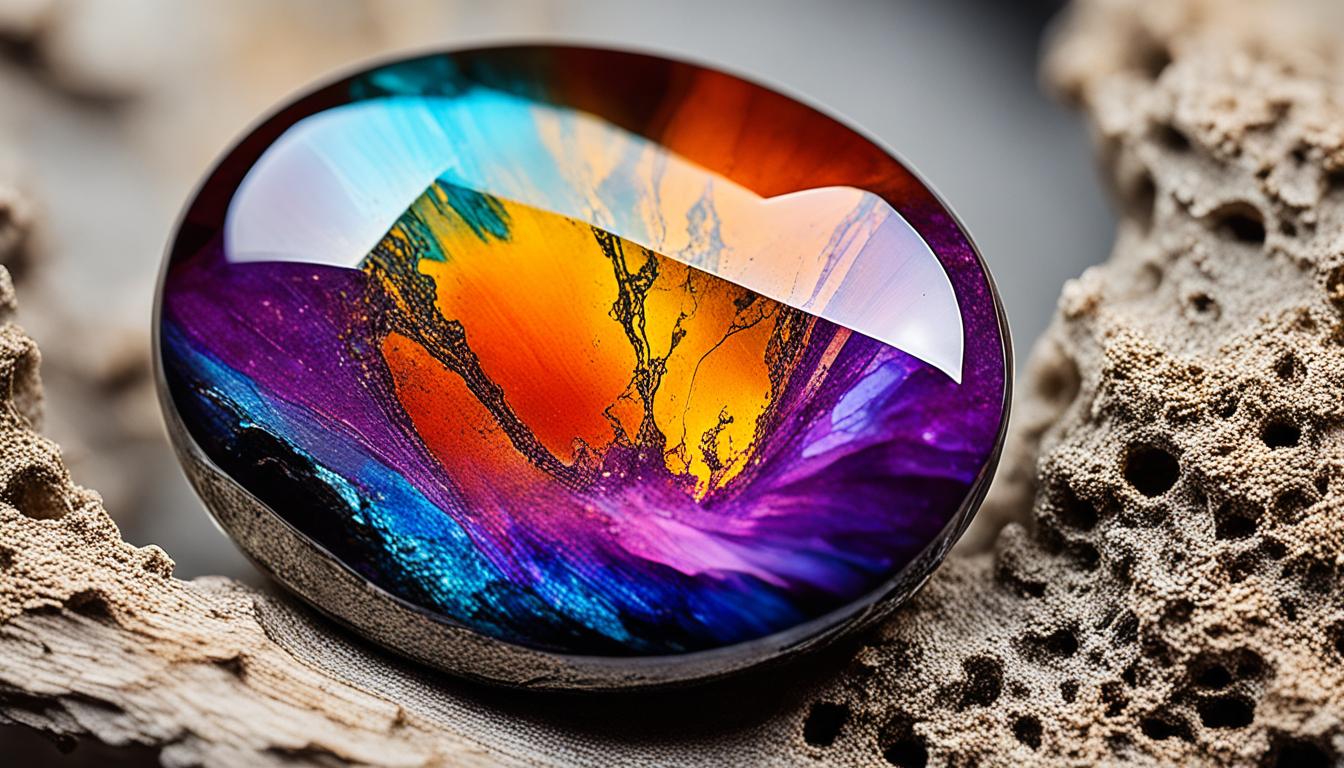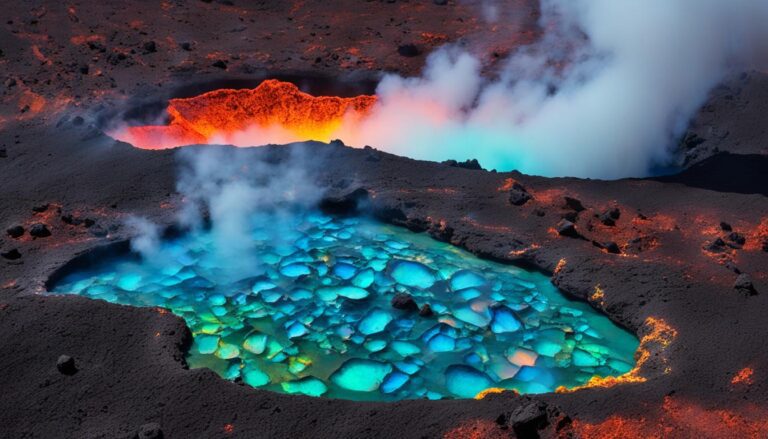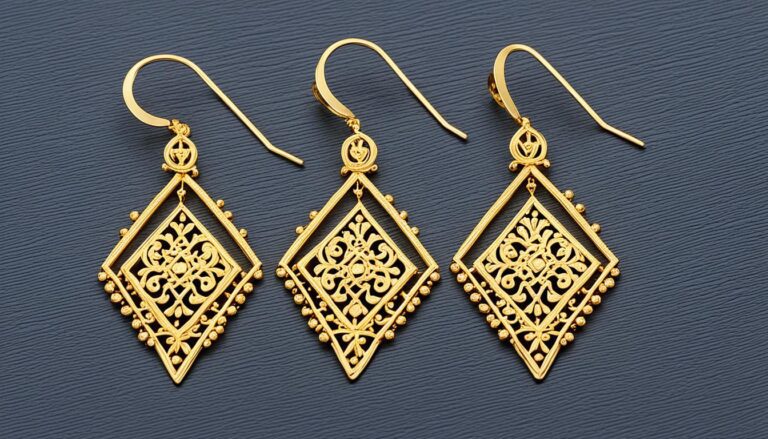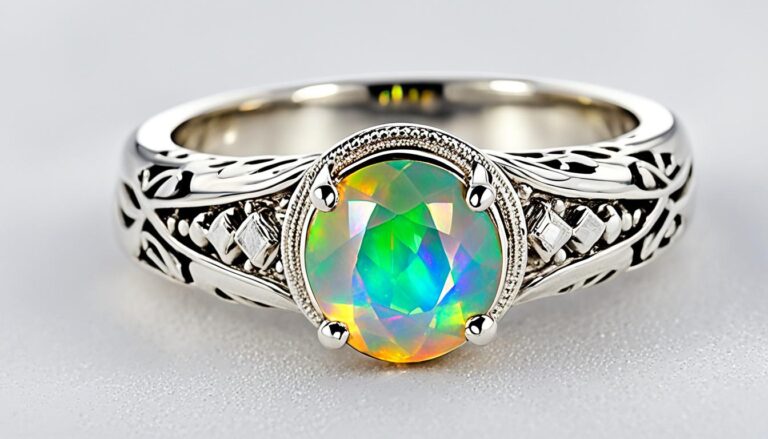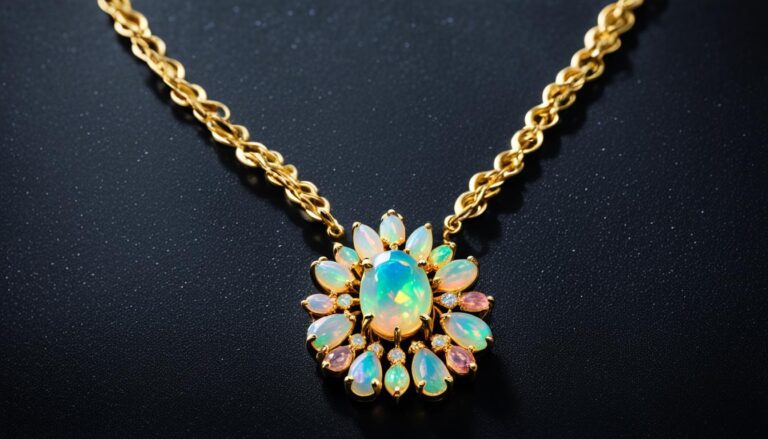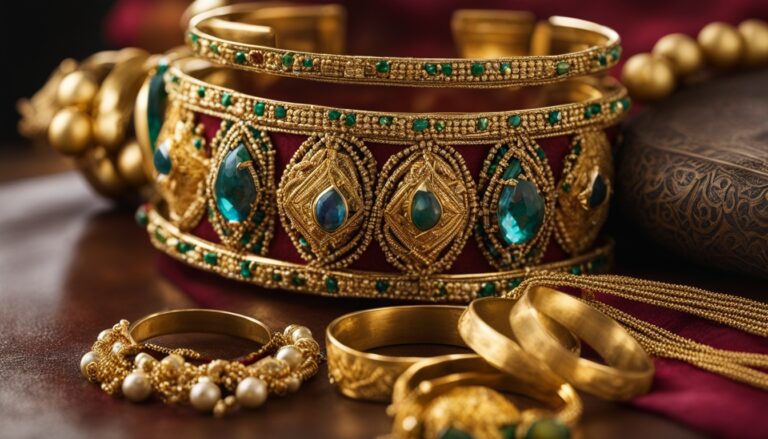Is Ethiopian Opal Natural
Opals have charmed jewelry fans for many years because of their amazing colors. But, as fake gemstones become more common, knowing if an Ethiopian opal is real is important. Found in the 1990s, Ethiopian opals quickly became popular. Yet, are these opals really from nature or are they made in a lab? We will look into the story of Ethiopian opals to find out.
What is a Natural Gemstone?
Natural gemstones come from minerals found in the earth. They are cut into beautiful shapes. These stones are made by the earth itself, not people. They form slowly over many years under lots of heat and pressure.
They have special, natural designs.
This is because they are made without any help from humans. When certain minerals mix with the earth’s processes, they become these fascinating gemstones. No two natural gemstones are exactly the same. That’s what makes them so special.
The mix of elements gives each gem a unique look. This is why an emerald looks different from a sapphire or ruby. The colors and designs in these gems are truly one-of-a-kind. Just like a fingerprint, they are unique.
You can find many different natural gemstones. From the rich green of an emerald to the shining blue of a sapphire. Each one is rare and beautiful. They have a story to tell about how they were formed.
What Are Synthetic Gemstones?
Lab-grown gems look almost the same as natural ones. They have the same looks and properties. This makes them hard to tell apart without special tools.
These gems are made in labs, using high-tech methods. They copy how nature makes gems. This way, we can have beautiful gems that are not too costly.
Lab-Grown Gemstones: A Result of Science and Technology
Making synthetic gems involves controlling their growth closely. This lets scientists change the gem’s chemical and crystal structure. They can make the gem’s features just as they want them to be.
The gems’ chemical makeup is the same as natural gems. Lab-made sapphires or rubies share the same elements. With careful control of temperature and pressure, these gems look and feel like natural ones.
The Benefits of Synthetic Gemstones
One big plus of lab gems is their price. They cost much less than natural gems. This makes them a great choice for more people.
Also, making gems in labs is better for the planet. It uses fewer resources and doesn’t harm the environment as much. It’s a more sustainable option.
Lab gems are also more perfect than natural ones. Since they are made, not found, they have fewer flaws. They’re consistent in quality, too.
Even though they aren’t as rare as natural gems, lab gems have their own good points. They look beautiful, cost less, and are kinder to the earth. So, they are a smart choice for anyone wanting gemstone jewelry.
Is Ethiopian Opal Natural?
Ethiopian opals are totally natural. They were found in Ethiopia back in 1994. Since then, people have loved them for their amazing colors. These opals have a base color like white, gray, or brown. But they also shine with bright colors that are really eye-catching.
The way Ethiopian opals are made is quite interesting. It involves fluids with lots of silica reacting with rocks over millions of years. This makes each opal have its own special, colorful look. Adding to their beauty, some opals might get a little treatment to boost their colors or strength. But, they’re still very much natural gems.
Here’s something cool – each Ethiopian opal is unique. That’s because no two will have the same color pattern. This makes them even more special and attractive. Because they’re both beautiful and rare, people who love jewelry or gemstones really admire Ethiopian opals. They’re a top pick for many collectors.
Stunning Beauty from Natural Origins
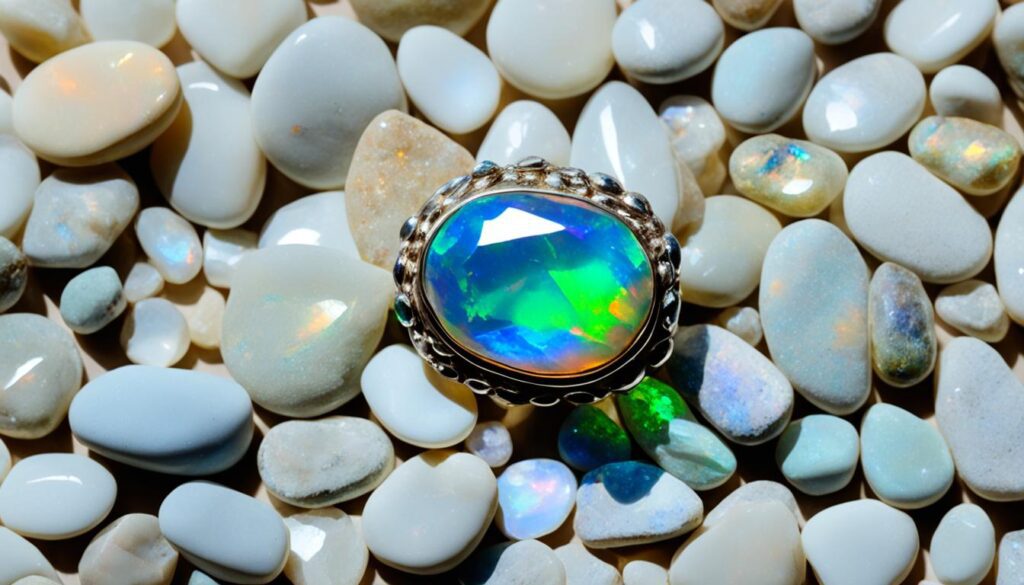
Just look at the picture above. It shows the amazing, lively colors of Ethiopian opals. These colors show off their natural story. You can wear them in a ring, necklace, or earrings. Wherever you wear them, Ethiopian opals will catch everyone’s eye. They’re a gemstone that makes any jewelry collection shine.
Real Vs. Fake Ethiopian Opals: How Can You Tell The Difference?
It can be hard to tell real from fake when it comes to Ethiopian opals. This is because some imitations look just like the real thing. But, there are important things to look for to know if it’s genuine.
The play of color is a dead giveaway for real Ethiopian opals. They shine with bright, moving colors. If the colors don’t shift and dance, it may be a fake.
Examining the base color helps too. Look for a creamy or brownish base in real opals. Fakes might be too bright or have weird colors.
The unique pattern of real Ethiopian opals is vital. They should have an irregular and fascinating mix of colors. If it looks too perfect or repeated, it could be a fake.
Don’t forget to check for surface flaws. Real opals often have small cracks or inclusions. But, fakes are often perfect without any blemishes.
Weight is also a clue. Real Ethiopian opals are usually light. If it feels heavy, it might not be real.
Buying from trusted dealers is your safest bet. They will confirm the opal’s authenticity with a certificate. They also know how to spot a fake from the real.
Look at the Pattern
When looking at an opal, the pattern and color play are key. Natural opals have a special pattern that separates them from fake ones. This pattern shows how the opal’s color flakes are arranged. It’s important to note this pattern isn’t always the same throughout.
Natural opals have their color flakes grouped close together. This close grouping shows a captivating range of colors. But, there’s still a mix in the size and shape of these colors. This mix is what makes a real opal look alive and exciting.
On the other hand, artificial opals might look too perfect. Their color flakes are evenly placed. They lack the variety in size and shape that you find in natural opals. Spotting this evenness can tell you if an opal is fake.
The image above is a perfect example of a real opal’s beauty. The close grouping of color flakes is stunning. And the varying sizes and shapes make the opal unique and charming.
Look At The Shape
When you look at an opal, its shape tells a lot. A natural opal shows unique shapes or imperfections. These might be uneven edges or not a perfect shape.
Fake opals, however, look too perfect. They might be perfectly round or oval. Such smooth shapes can mean they are not real opals.
Looking closely at an opal’s shape can help you figure out if it’s real. Natural opals’ flaws and unique shapes are from nature’s creation. Yet, an opal that’s too perfect might be man-made.
Key Differences Between Real and Fake Opals
Knowing how to tell real opals from fake is crucial. Real opals have features that make them stand out from fakes. This includes their unique shapes, patterns, and luster.
Real opals shine with a variety of shapes and designs. They might look feathered or have interesting plays of color. Fake opals, however, might look dull and have the same pattern throughout.
Look at how the opal’s surface appears. A real opal might have some small marks, adding to its natural beauty. Fakes are often too perfect and lack these natural marks.
To spot a real opal, pay attention to details. Look for unique shapes, check the density, and inspect for any small marks. These steps will guide you in making a wise choice when buying an opal.
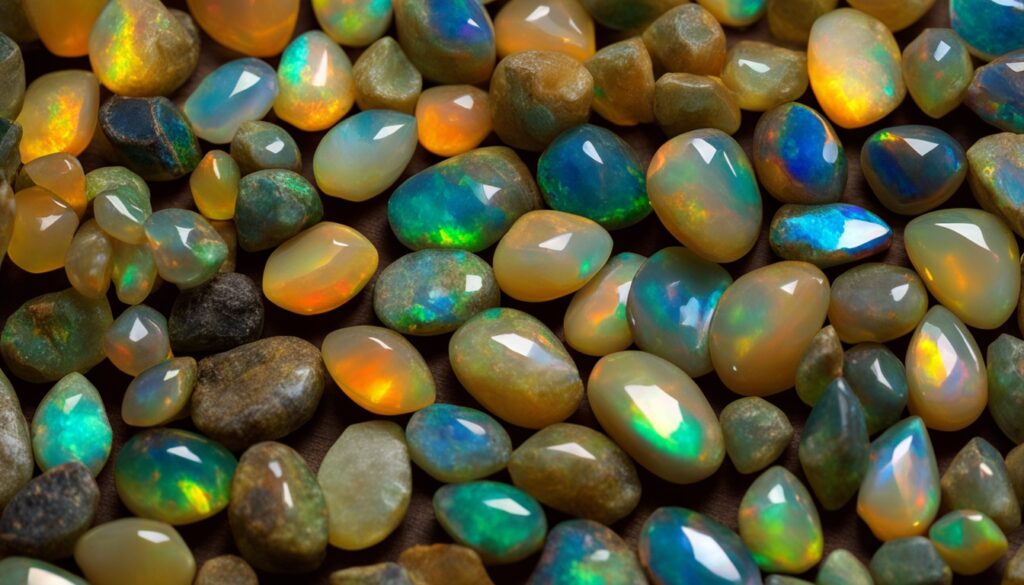
Conclusion
Ethiopian opals are a beautiful choice for those who love opals. They are known for their amazing play of colors. However, there are fake ones out there, so be careful.
It’s important to buy your opal from trusted sellers. These sellers guarantee that your opal is the real deal. They have a good reputation and know a lot about opals.
To spot a fake opal, look closely at its pattern and shape. Real opals have unique, irregular features. Make sure your opal shows these signs of authenticity.
When buying Ethiopian opals, trusting your seller is crucial. Always pick dealers known for being honest and accurate about their gemstones. This way, you can enjoy your natural opal worry-free.
Source Links
- https://medium.com/@thegemsheaven/is-ethiopian-opal-natural-how-to-spot-a-real-from-a-fake-724594ce045b
- https://www.opalauctions.com/learn/opal-information/ethiopian-opal-natural-how-to-spot-a-real-from-a-fake
- https://www.reddit.com/r/whatsthisrock/comments/10i5tdf/pretty_sure_i_know_the_answer_but_is_the_opal/

